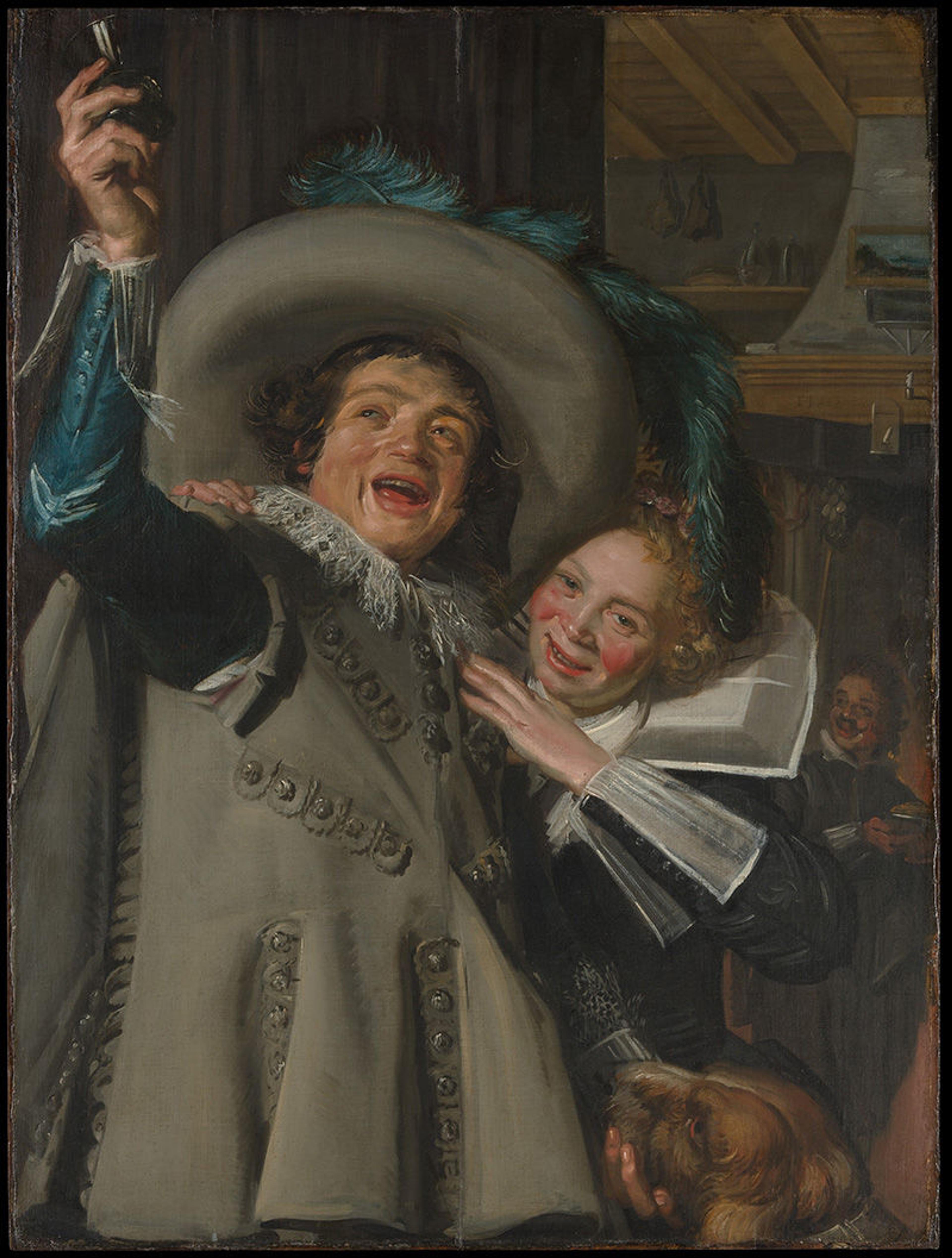Guia de áudio

5248. Frans Hals, Young Man and a Woman in an Inn
NARRATOR: What are we to make of the young man raising his glass as a woman clings to his side? Adam Eaker and Gavin Finney.
ADAM EAKER: They’re in a setting that very well may be a brothel, or at least a tavern. They’re probably not a lawfully wed couple, and perhaps we’re meant to look at this image from a vantage point of moral superiority, but at the same time I think it’s a reminder of our own humanity. And our own human weakness.
GAVIN FINNEY: People are behaving in these pictures the way they behave now, practically. Men and women drinking, getting perhaps, too drunk. Fancying each other. Fundamental human behavior doesn't change a great deal. Seems it to us, but in a way these paintings bridge that gap. And when we recognize ourselves in these paintings, there's a connection that you don’t get with more austere works.
NARRATOR: During a time of great prosperity and indulgence in the Dutch Republic, a stern Calvinist influence still pervaded society. Paintings like this one may have been meant as warnings against excess.
ADAM EAKER: This painting would have been a very expensive luxury product made for someone in the upper echelons of society. And for that reason, people have assumed that we’re supposed to adopt a kind of scornful, condescending vantage point. But it remains an open question why you would want an expensive, beautifully painted image of people for whom you had contempt.
This is the kind of painting that art historians love to debate. Is it a work that really is meant to just amuse and give pleasure? Or, when we yield to that pleasure, are we distracting ourselves; are we neglecting the critical moral message at the heart of the painting?